Menus
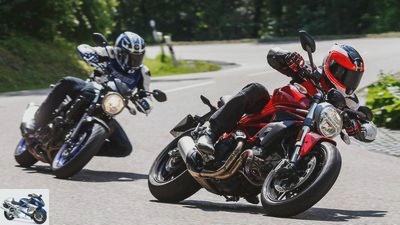
Artist
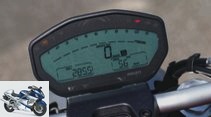
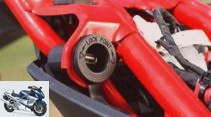
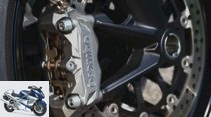
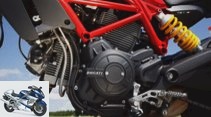
28 photos
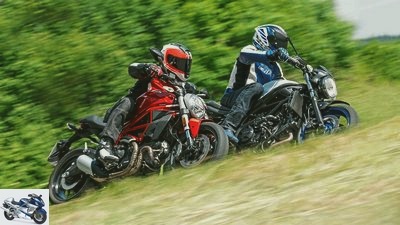
1/28
Ducati Monster 797 and Suzuki SV 650 in comparison test.

2/28
Ducati Monster 797: Modern, the first: The display provides information about a lot – but there is no gear indicator or fuel gauge.
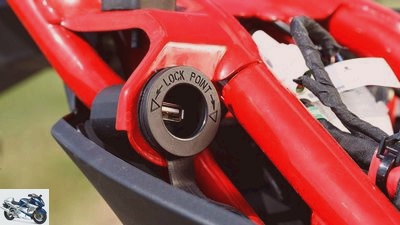
3/28
Ducati Monster 797: Modern, the second: We have known since the hipster generation – air-cooled cylinders and mobile phone charging socket go together.
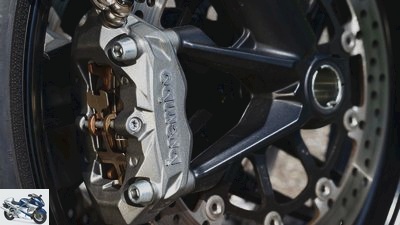
4/28
Ducati Monster 797: Modern, the third: high-quality monoblock pliers from Brembo bite into 320 mm discs – tremendously.
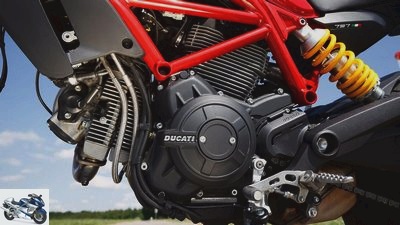
5/28
Ducati Monster 797: All the pride: The last air-cooled Ducati V2 is elegantly staged in the Monster.
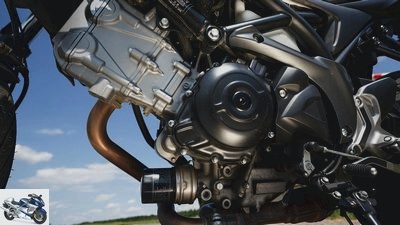
6/28
Suzuki SV 650: where is it? Suzuki hides half of the famous V2 behind a frame and plastic container.
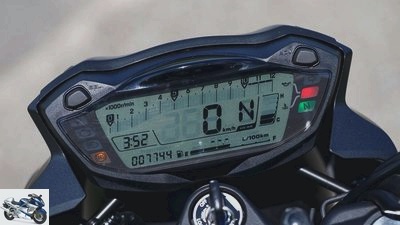
7/28
Suzuki SV 650: Everything is included: You seldom need to know more than the SV display shows. Only operation from the handlebar would be nice.
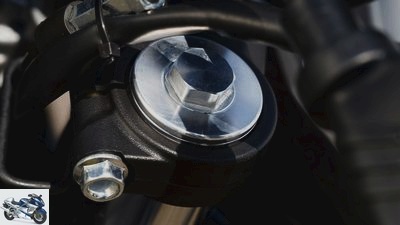
8/28
Suzuki SV 650: That’s how it is and it stays that way: Neither fork nor shock absorber can be adjusted in the damping. The vote is very soft.
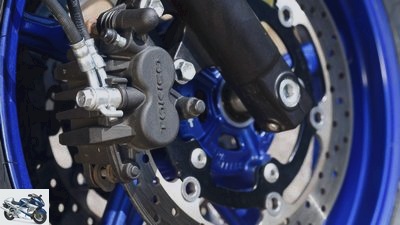
9/28
Suzuki SV 650: Ordered with a red pen: The floating calipers leave plenty of room for improvement – but the ABS works perfectly.
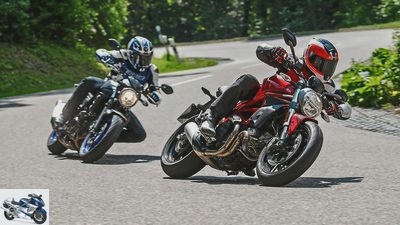
10/28
Around the corner: When things get fast, no line goes past the Ducati. The Suzuki leaves the cheeky ride rather cold.
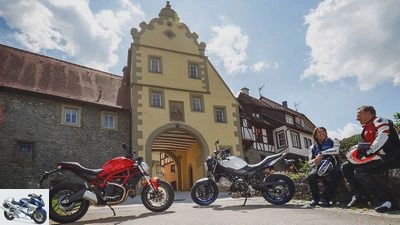
11/28
Ducati Monster 797 and Suzuki SV 650 in comparison test.
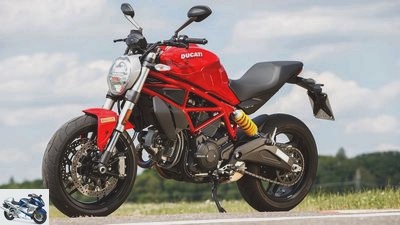
12/28
Ducati Monster 797 in comparison test.
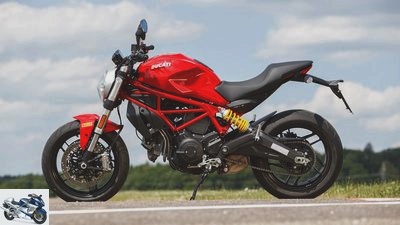
13/28
Ducati Monster 797 in comparison test.
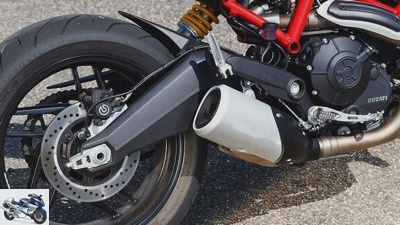
14/28
Ducati Monster 797 in comparison test.
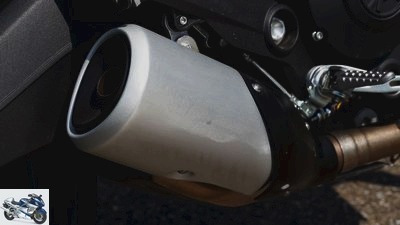
15/28
Ducati Monster 797 in comparison test.
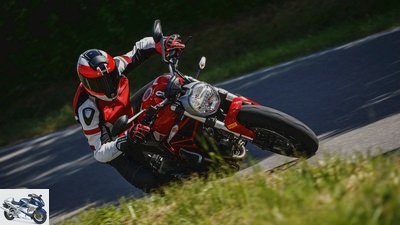
16/28
Ducati Monster 797 in comparison test.

17/28
Ducati Monster 797 in comparison test.
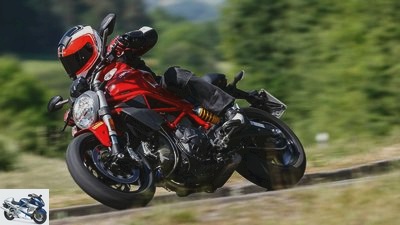
18/28
Ducati Monster 797 in comparison test.
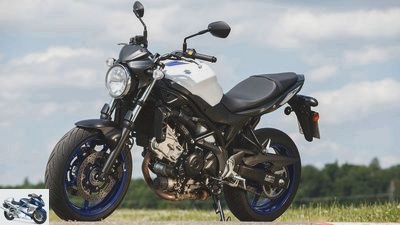
19/28
Suzuki SV 650 in comparison test.
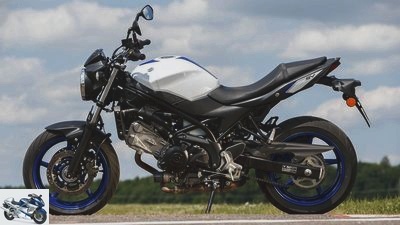
20/28
Suzuki SV 650 in comparison test.
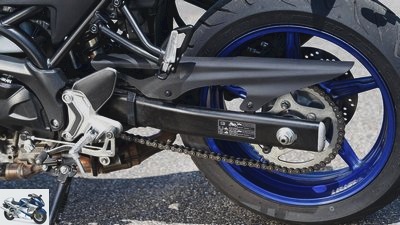
21/28
Suzuki SV 650 in comparison test.
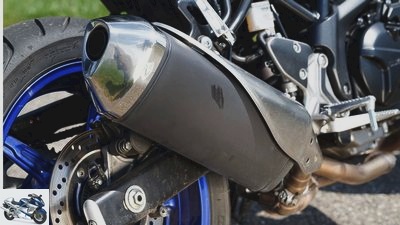
22/28
Suzuki SV 650 in comparison test.
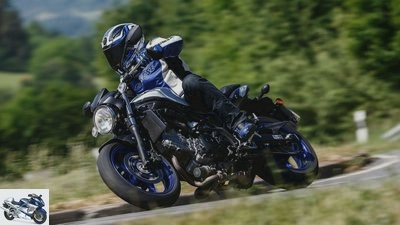
23/28
Suzuki SV 650 in comparison test.

24/28
Suzuki SV 650 in comparison test.
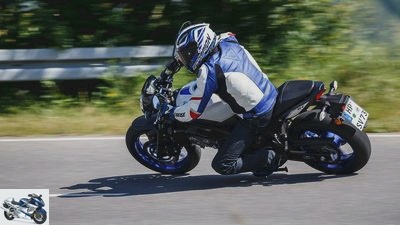
25/28
Suzuki SV 650 in comparison test.
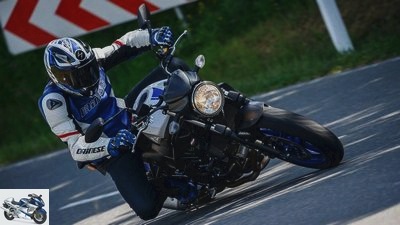
26/28
Suzuki SV 650 in comparison test.
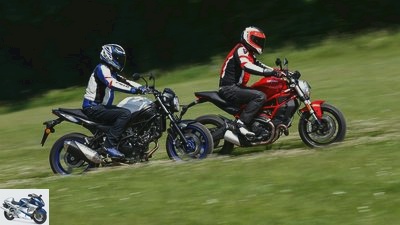
27/28
Ducati Monster 797 and Suzuki SV 650 in comparison test.

28/28
Ducati Monster 797 and Suzuki SV 650 in comparison test.
Ducati Monster 797 and Suzuki SV 650 in comparison test
Medium-sized naked bikes with a V2 engine
It wasn’t even gone, the last air-cooled two-cylinder from Ducati. But now the Desmo-Due is no longer just in the lifestyle Scrambler, but again in a Monster, the Ducati Monster 797. Good. Then he can go on tour with the second evergreen of the V2 mid-range, the Suzuki SV 650.
S.chnuff, schnauz – quite a few Ducatisti waved to him with a tear-soaked handkerchief, maybe even clenched their fist in their pocket and asked themselves the question: Did it really have to be at the end of 2014 to take the last air-cooled Ducati V2 out of the range to just put the Monster 796 in the corner? But now for a long time, many will shout, keep their thumbs on the tear gland and sing the high song to the scrambler. To the fact that the 803 Desmo Due is more popular and successful among the checked shirt-sleeved riders than it was ever in the Monster. And they are right. The Scrambler has been the best-selling Ducati in this country for three years. Still: Nothing against the retro moped, but …
Buy complete article
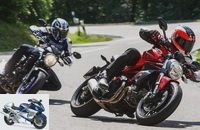
Ducati Monster 797 and Suzuki SV 650 in comparison test
Medium-sized naked bikes with a V2 engine
Ducati only available the two entry-level Scrambler models, the 62 and the Icon.
The sound remains as restrained as the price. And that in a positive sense. Because instead of sharing the push of a button acoustically with the neighborhood like so many of its big siblings, the Duc’s puristic L-motor thuds with a bassy, but well-dampened, stubby exhaust. To drown out the Suzuki V2, it is definitely enough. The 90-degree twin purrs as finely as a sewing machine, as if it wanted to demonstrate the precision of Japanese mechanical engineering from the first turn, thus recalling its title of “reliable duckling”. The slogan with which MOTORRAD once recognized the impeccable reliability of the identical motorized Gladius in the 50,000-kilometer endurance test.
Clack, with a fine click the claws of the first gears slide into one another. Departure. Before the engines can bring their characters into play, the ergonomics draws attention. You are as you sit – if this winged sentence existed, it would aptly describe the feeling on the duo. The handlebars stretches out narrowly towards the Suzuki pilot, the seat bench places it low (780 mm), and the fittings and display are simple. The arrangement signals modesty. And therefore fits the SV. Maybe because she is aware of her true values. But more about that later.
The monster receives its rider with a broad chest. And that in the literal sense. The Italian spreads her arms a stately ten centimeters wider and positions him in a front-wheel-oriented manner. The 83 centimeters more airy seat height can be reduced by 25 millimeters with a retrofit bench (230 euros). The Duc signals self-confidence. Narrow mirrors – who should be pushing from behind? The missing gear indicator or fuel gauge in the display – banalities. For this, the display can be operated from the handlebars or the mobile phone can be charged via the USB port in the rear. The bottom line: it sits comfortably on both. More relaxed on the Suzuki, more committed on the Ducati.
The first turns change the perspective, bring the engines into focus. The initially broad-shouldered appearance is followed by the Desmo-Due rather the softer tones. Understandable, after all, a tame eleven degrees of valve overlap and a single instead of two throttle bodies trim the Luftikus for the Scrambler and Euro 4. Apart from the reduced peak performance, it didn’t harm him. But on the contrary. The typical Ducati rumble below 3000 revs is a thing of the past. It runs smoothly from 2000 rpm, climbs cleanly and easily controllable up the speed ladder. Only on the top rungs does he get a little fear of heights, breathe shallowly and then let it be good at 9100 tours. Intuitively, one clicks much earlier anyway, for example at the 7000 mark into the next gear and holds the two-valve engine in its strong center. However: Compared to the Euro 3 homologated scramblers measured by MOTORRAD so far, the Euro 4-V2 in the Monster has lost some top performance (3 HP) and pulling power. In this respect, one is only amazed at the gear that has to be shifted hooked and the clutch that bites aggressively when starting up, given the drive’s basically successful appearance.
And about the fact that the limelight ultimately swings to the shy Suzuki V2. There is a reason that generations of gladiuses, V-Stroms and SVs have largely owed their success to this water-cooled four-valve engine. Even better running smoothness right at the bottom, hardly less pressure in the middle and 1300 additional tours at the top (maximum speed 10400 / min): With this combination, the evergreen is first class. Yes, it completes the 645 with an inconspicuous gearshift and clutch for the Susi carefree engine. Aside from the question: What about driving modes? Neither the famous Suzuki Triebling nor the Ducati Desmo needs it. The votes were successful and nobody will miss the superfluous zap.
Cigarette break, gasoline conversations. The Ducati and Suzuki are the only two V2 engines in the middle class displacement. It’s actually a shame, because a V2 is narrow, has a beguiling sound and pressure from the low rev range. Nevertheless, the competition almost exclusively relies on in-line engines with two, three or four cylinders. For cost reasons? Experts shake their heads, do not see the manufacturing effort as the reason, but rather cite the difficult configuration of the periphery as a V-killer. The spreading of a V2 requires a lot of installation space, which ultimately lacks the manifold of the rear cylinder, the air filter box and the tank. In-line engines offer designers more freedom.
So the V2 is a creed. One that Ducati in particular stages accurately. Instead of the rudimentary steering head carrier of the two big sisters screwed to the cylinders, the ribbed Vau of the Monster 797 hangs in the attractive, fire-red tubular space frame, attracting public attention. The Italians have style and self-confidence. One could almost say: in contrast to the Japanese. The upright cylinder of the SV disappears almost invisibly between the black frame profiles and the cooling water expansion tank. A pity.
No more fundamental discussions. Saddle up. The Ducati greedily rushes into the corners, converting the sporty seating position and the proper feedback from the Diablo Rosso 2 tires into a clean line. Only on bumpy roads do the bumps in the sloping position cheekily pull the wide 180 mm rear tire – and shake the pilot through. Comfort is not the strength of the upside-down fork from Kayaba and the Sachs shock absorber that is directly linked to the pretty two-arm aluminum swing arm. Readjustment is hardly possible. The fork, which is rather progressively tuned, cannot be adjusted, the tightly damped monoshock works best with the rebound stage fully turned up. You also have to get used to the brakes. The Brembo monoblock pliers claw their way into the windows and require an extremely sensitive hand on the lever. Nevertheless: The combo of brakes, suspension and tires conveys value and justifies the price premium to the Suzuki to a certain extent.
That can’t keep up in this respect. Drought 41 mm telescopic fork, floating saddles that tweak in 290 mm discs, spring elements that cannot be adjusted in the damping, the suboptimal Dunlop Sportsmart 2 – the accessory order form for the SV seems to have been filled in with a red pen. Against this background, the SV is not pulling out of the affair so badly. The soft suspension swallows cross and cross joints easily, the narrow 160 mm tire cannot be thrown out of hand so quickly by distortions in an inclined position and the brakes are carefully applied – provided that the deficits of the SV are interpreted positively. With the brisk Eckenwetz, however, the good one gauzes through its spring travel, lacks decent feedback from the tires and needs a strong hand for a quick stop. In short, the SV wants to be treated the way it is designed: sensibly.
Then she pulls her trump cards out of her sleeve in quick succession. Guess what: Which bike brakes most efficiently in the ABS control range? The Suzuki is after 41 meters (Ducati: 45 m). Which has the highest payload? 221 kilos are allowed on the Suzuki (Ducati: 193 kg). Which one uses the least fuel? The Suzuki swallows 3.6 liters per 100 kilometers (Ducati: 4.6 l) with a sensible driving style. And who can snap from 0 to 140 km / h the fastest? The Suzuki does it in 7.2 seconds (Ducati: 8.3 sec). And which costs almost 30 percent less than the other is obvious.
Do these arguments drag? If you say yes, you will understand that the down-to-earth SV 650 of the Ducati ultimately outstrips the final account. If you don’t care about these aspects, you don’t necessarily have to end up with Ducati. He can choose – between fine rib or radiator hose.
MOTORCYCLE test result
1. Suzuki SV 650
With the grandiose V2, Suzuki is still setting standards and overwriting the dictates of the red pen. Because the brakes and chassis are not at eye level with the brilliant drive. She collects her points using rational criteria. The discrepancy to the Ducati could hardly be greater.
2. Ducati Monster 797
It doesn’t always have to be retro. The mixture of air-cooled V2 and modern outfit captivates right away. Even if the 797 is missing a few points, many will have longed for this monster. Especially since the price for the valuable Ducati remains within limits.
Related articles
-
Ducati 1299 Panigale S and Kawasaki Ninja H2 in comparison test
31 photos 1/31 On the left in the picture 197 PS and 145 Nm (Ducati 1299 Panigale S), on the right there are 200 PS and 133 Nm…
-
Ducati Monster 821, Suzuki GSX-S 750, Triumph Street Triple RS
34 pictures 1/34 Three motorcycles, three drive concepts. Ducati Monster 821, Suzuki GSX-S 750 and Triumph Street Triple RS in …
-
factstudio.de 29 photos fact 1/29 One against all. Ducati SuperSport S in comparison test with Suzuki GSX-S 1000 F, Kawasaki Z 1000 SX, Honda VFR 800 F…
-
KTM, Ducati, Triumph and Suzuki bikes in comparison
Jahn 16 pictures Jahn 1/16 How many cylinders does a biker need to be happy? Which engine concept impresses with which advantages? A comparison of four …
-
BMW, Ducati, Suzuki and Triumph super sports cars in a comparison test
29 photos 1/29 Triumph Daytona 675, Ducati 848 Evo Corse SE, BMW S 1000 RR, Suzuki GSX-R 750. Different bikes – different cubic…
-
Ducati Monster 1200, KTM 690 Duke R and Yamaha MT-09 in comparison
www.bilski-fotografie.de 42 pictures bilski-fotografie.de 1/42 Ducati Monster 1200, KTM 690 Duke R and Yamaha MT-09 in the comparison test bilski-fotografie.de …
-
Yamaha MT-07, Kawasaki ER-6, Suzuki Gladius 650 and Ducati Monster in the test
Jahn 39 pictures Jahn 1/39 Where I am is in front – the MT-07 is addicted to curves. Jahn 2/39 Less saved: At least the fork can be …
-
Ducati Monster 1200 S in the top test
www. 33 Pictures 1/33 2/33 Noticeable negative: When folding up the tank gets stuck at the front, so the …
-
Ducati Monster 821, Aprilia Shiver, BMW F 800 R in comparison test
Arturo Rivas Ducati Monster 821, Aprilia Shiver, BMW F 800 R in the comparison test asphalt sympathizers Even if there is no gray in the photo: The …
-
BMW R 1200 R and Ducati Monster 1200 in a comparison test
Gargolov 30th photos Gargolov 1/30 Ducati Monster 1200 and BMW R 1200 R.. Gargolov 2/30 … modern headlights, … Gargolov 3/30 Ducati Monster 1200 and…